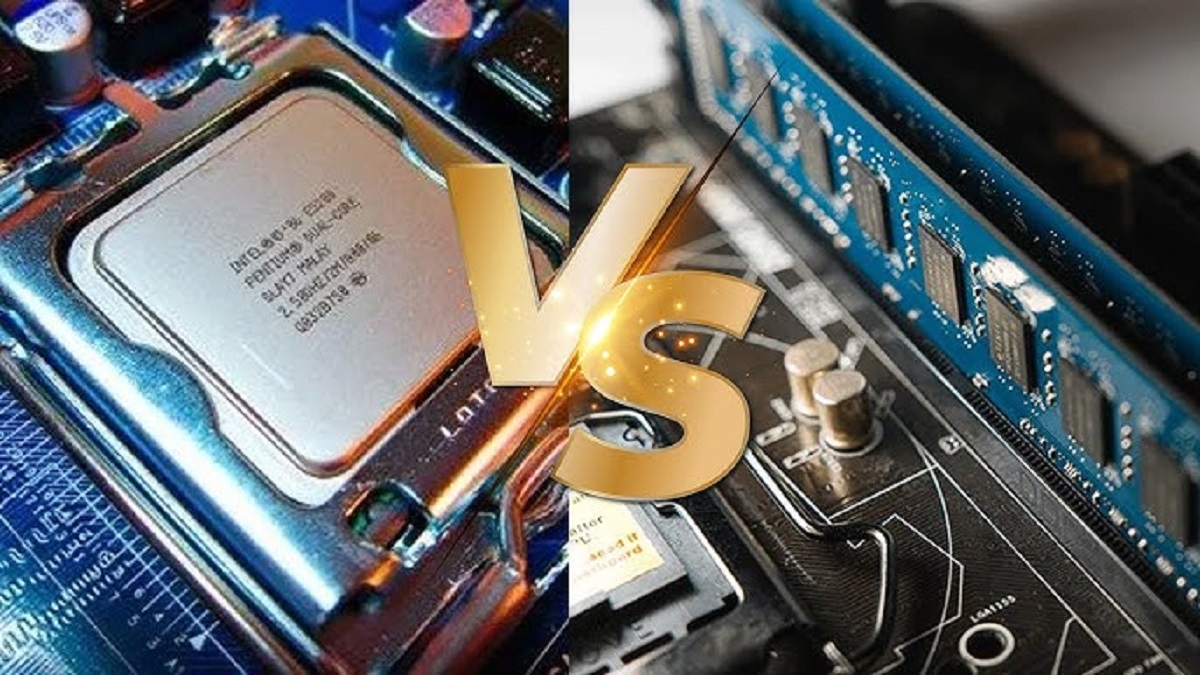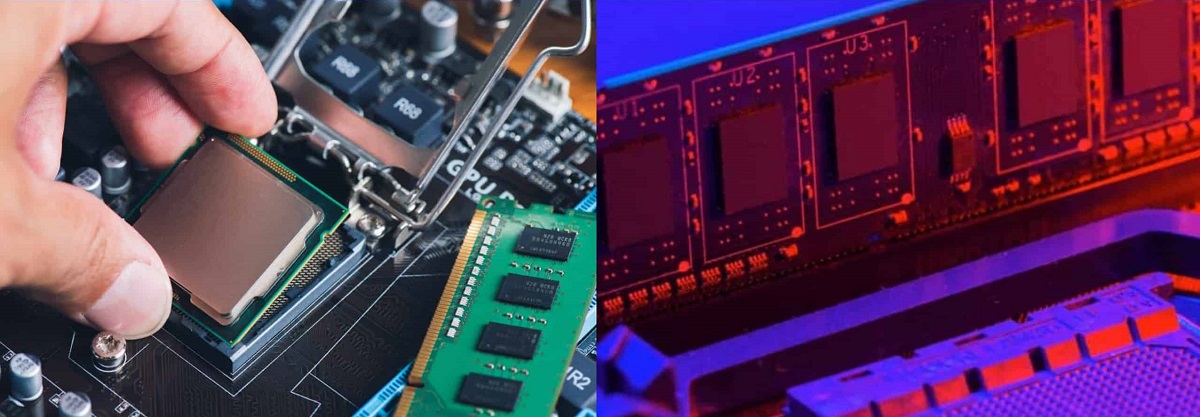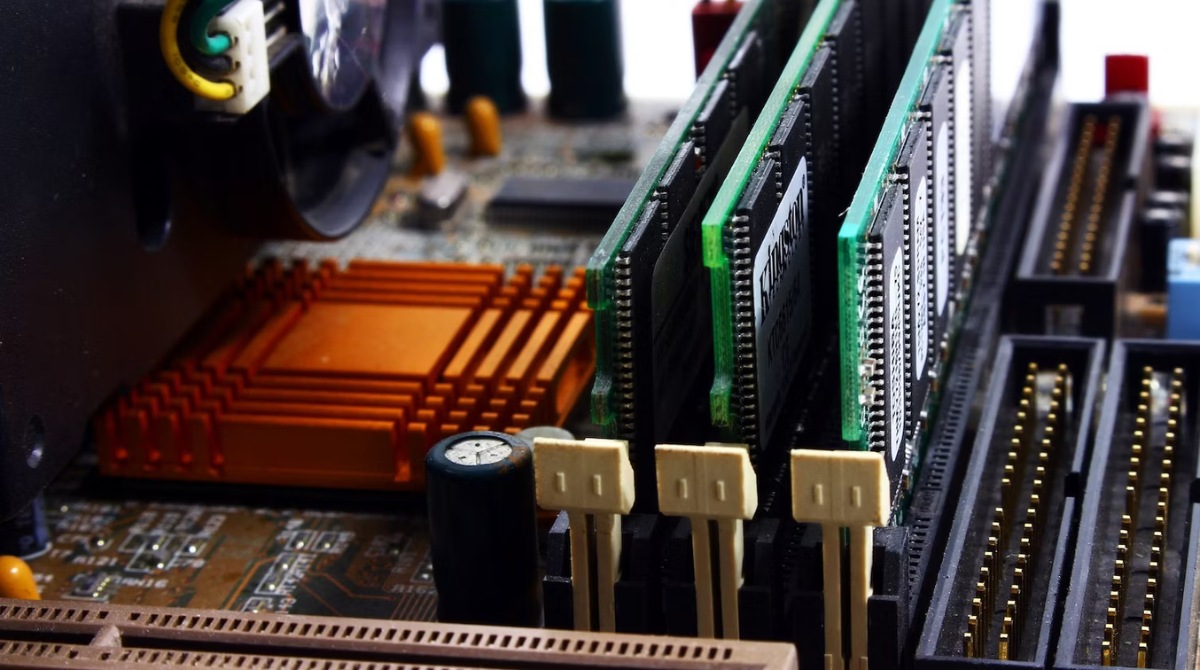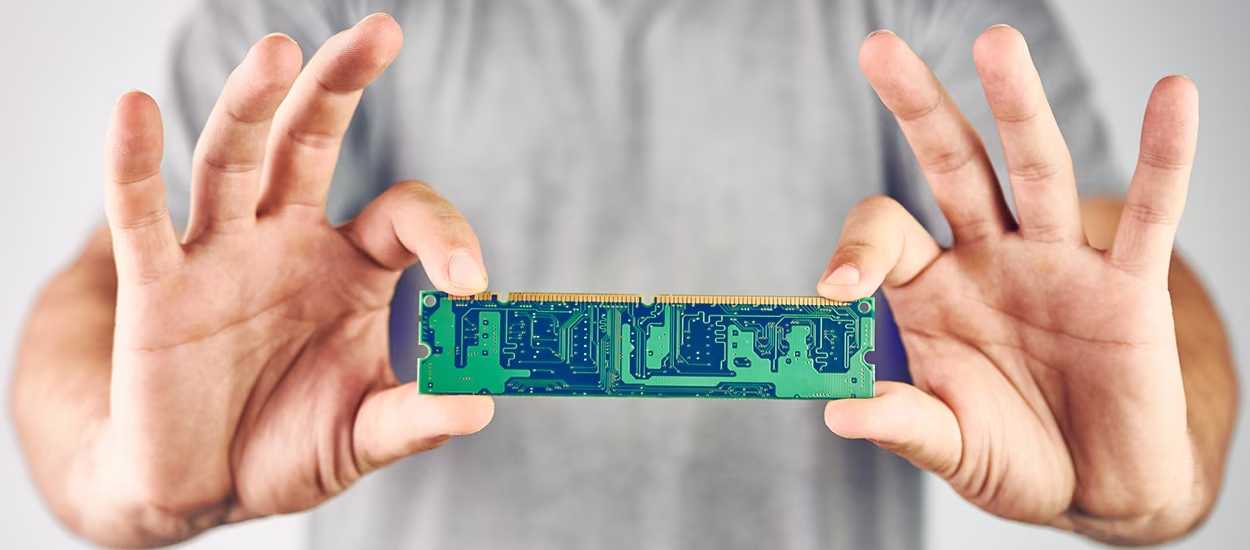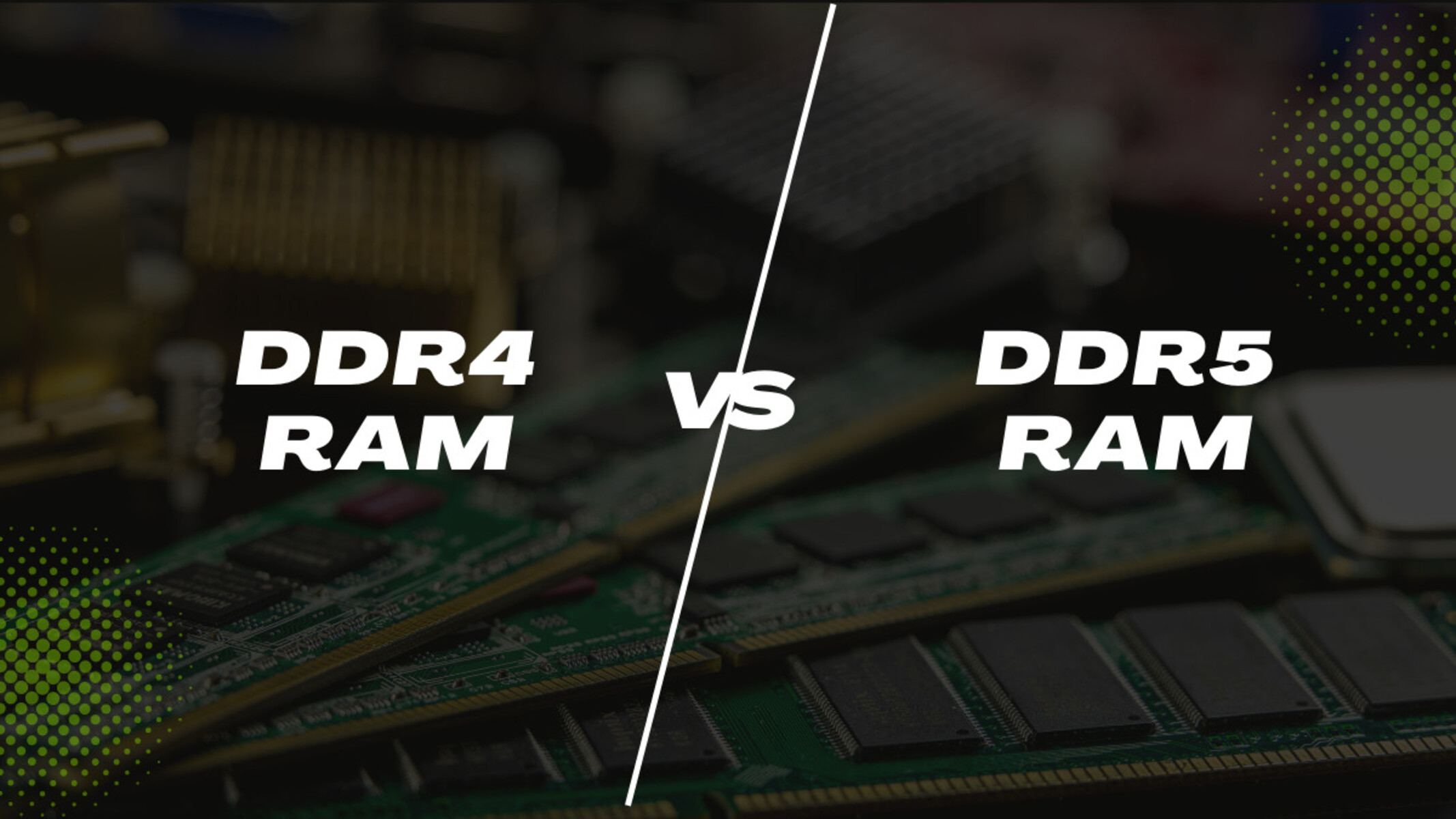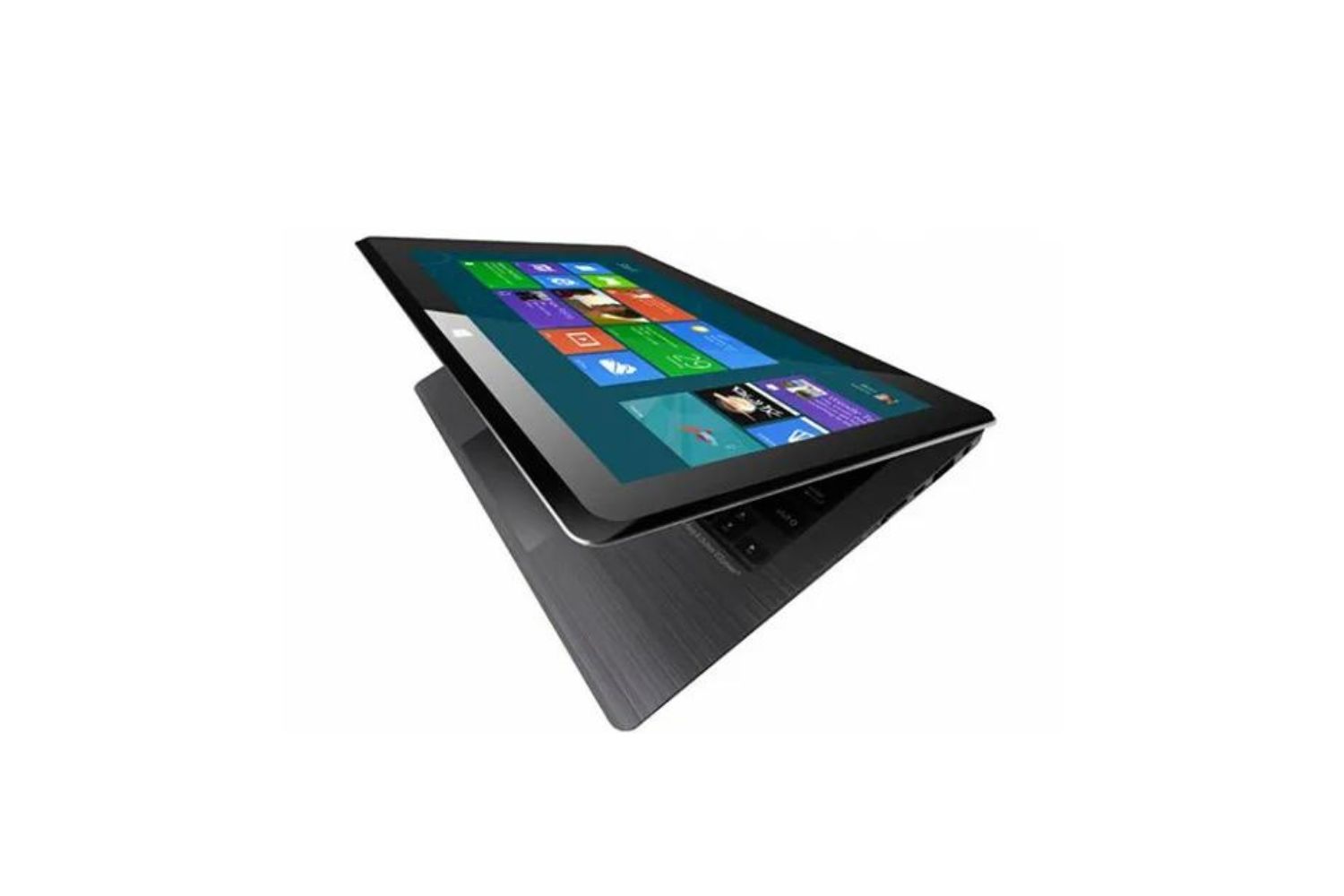Introduction
When it comes to computer performance, two key components play a crucial role: the processor and RAM. These hardware components are essential for ensuring a smooth and efficient computing experience. But what exactly are the differences between them, and which one is more important?
The processor, often referred to as the central processing unit (CPU), is like the brain of the computer. It handles all the computations and instructions, driving the overall performance of the system. On the other hand, RAM, or random access memory, serves as a temporary storage space for data that the processor needs to access quickly. While both the processor and RAM contribute to the functioning of a computer, each plays a distinct role.
In this article, we will delve into the differences between the processor and RAM, understand their individual importance, explore how they work together, and provide some key factors to consider when choosing between the two.
Before we dive into the details, it is important to note that both the processor and RAM are crucial for optimal computer performance. However, depending on your specific computing needs, the significance of each component may vary. By understanding their differences and roles, you will be better equipped to make informed decisions when it comes to upgrading or purchasing a new computer.
What is a Processor?
The processor, also known as the central processing unit (CPU), is a fundamental component of a computer system. It serves as the brain of the computer, executing instructions and performing calculations to enable the functioning of various software programs and processes. The processor is responsible for carrying out the majority of tasks that occur within a computer system.
The processor is composed of several key elements, including the control unit, arithmetic logic unit (ALU), registers, and cache. The control unit manages the flow of data and instructions within the processor, while the ALU performs arithmetic and logical operations. The registers serve as temporary storage locations, holding data that the processor needs to access quickly. The cache acts as a high-speed memory buffer that stores frequently used data, improving overall system performance.
Processors come in different architectures and models, with each having varying capabilities and performance levels. The two main competitors in the processor market are Intel and AMD. Intel processors, known for their high performance and power efficiency, are commonly found in a wide range of devices, from laptops to servers. AMD processors, on the other hand, offer competitive performance at a more affordable price point, making them popular among budget-conscious users.
One crucial aspect to consider when evaluating a processor is its clock speed, measured in gigahertz (GHz). The clock speed determines the number of instructions a processor can execute per second. Generally, a higher clock speed translates to faster processing, but other factors such as the number of cores and architecture also play a role in determining overall performance.
In recent years, there has been a shift towards multi-core processors, which have the ability to perform multiple tasks simultaneously. With multi-core processors, each core can handle a different task, resulting in improved multitasking capabilities and enhanced performance for applications that can utilize multiple cores effectively.
Overall, the processor is the powerhouse of the computer, responsible for executing instructions and performing calculations. It plays a significant role in determining the overall speed and performance of the system. While the processor is crucial, it works in conjunction with other components, such as RAM, to deliver optimal computing performance.
What is RAM?
RAM, or random access memory, is a type of volatile memory that enables the computer to store and quickly access data that is actively being used by the processor. Unlike permanent storage such as hard drives or solid-state drives, RAM is temporary and loses its data when the computer is powered off or restarted. RAM is essential for the smooth and efficient operation of a computer system.
Think of RAM as a workspace where the processor can store and retrieve data at incredibly fast speeds. When you open a program or run an application, the required data is loaded from the storage drives into the RAM. The processor can then access this data much faster than if it had to retrieve it from the storage drives every time it needs it. This quick and easy access to data allows for faster processing and overall system performance.
The amount of RAM installed in a computer determines how much data can be stored and accessed at any given time. More RAM generally allows for smoother multitasking, faster application loading times, and improved overall system responsiveness. However, it is important to note that having excessive amounts of RAM may not necessarily translate to better performance if the processing power of the computer is unable to utilize it efficiently.
RAM is measured in gigabytes (GB) and is available in various speeds and types, such as DDR3, DDR4, and DDR5. Higher speed RAM modules can transfer data at faster rates, further enhancing the system’s performance. The type of RAM supported by a computer is dependent on its motherboard and processor compatibility.
In addition to the amount and speed of RAM, it is also crucial to consider the number of RAM slots available on the motherboard. More slots allow for easier upgrading in the future, as you can simply add more RAM modules without having to remove existing ones.
It is important to note that RAM works in conjunction with other components, such as the processor, to maximize overall system performance. While the processor handles the computational tasks, RAM provides the necessary temporary storage for data that the processor needs to access quickly. Without sufficient RAM, the processor may experience delays in retrieving data, leading to decreased performance and potential system slowdowns.
In summary, RAM is a crucial component of a computer system that provides temporary storage for data actively being used by the processor. It allows for faster data access and retrieval, enhancing overall system performance and enabling smooth multitasking. Increasing the amount and speed of RAM can lead to improved performance for resource-intensive tasks and applications.
Key Differences between Processor and RAM
While the processor and RAM are both essential components of a computer system, they serve different functions and have distinct characteristics. Understanding the key differences between the processor and RAM can help you better comprehend their roles in the overall performance of a computer.
1. Function: The processor is responsible for executing instructions and performing calculations. It handles the core processing tasks of the computer, such as running software programs and executing commands. RAM, on the other hand, serves as temporary storage for data actively being used by the processor. It enables quick access to data, enhancing the overall speed and efficiency of the system.
2. Volatility: The data stored in RAM is volatile, meaning it is lost when the computer is powered off or restarted. RAM is only used for temporary storage, and its contents are constantly changing. In contrast, the processor does not store data; it only processes and manipulates it. Permanent storage, such as hard drives or solid-state drives, is used for long-term data storage.
3. Capacity: The processor’s capacity is determined by its specifications, such as clock speed, number of cores, and cache size. These factors influence the processor’s ability to handle tasks and perform calculations. RAM capacity, on the other hand, refers to the amount of temporary storage available. It directly affects the system’s ability to multitask and handle larger amounts of data simultaneously.
4. Speed: The processor’s speed is measured in gigahertz (GHz) and represents how many instructions it can execute per second. A higher clock speed generally translates to faster processing. In contrast, RAM speed refers to how quickly data can be read from or written to the memory. Faster RAM speeds lead to enhanced data access and retrieval, improving overall system performance.
5. Upgradeability: Upgrading the processor typically involves replacing the entire unit, as it is a separate component that is soldered or socketed onto the motherboard. Upgrading RAM, on the other hand, is relatively easier and more cost-effective. Additional RAM modules can be added or replaced on the motherboard, typically without requiring extensive hardware changes.
6. Importance: Both the processor and RAM are vital for computer performance, but their importance may vary depending on the specific computing needs. The processor’s processing power and capabilities significantly impact tasks that require computational power, such as gaming, video editing, or 3D rendering. RAM, on the other hand, plays a crucial role in multitasking, overall system responsiveness, and the efficient handling of large datasets.
Understanding the differences between the processor and RAM is essential when considering system upgrades or purchasing a new computer. While the processor determines the computational capabilities of the system, RAM provides the temporary storage required for smooth and efficient data access. The optimal balance between a powerful processor and sufficient RAM capacity can lead to an improved computing experience.
Importance of Processor
The processor, also known as the central processing unit (CPU), plays a critical role in the overall performance and functionality of a computer system. It is the brain of the computer, responsible for executing instructions, performing calculations, and managing various tasks. The importance of the processor can be highlighted in the following ways:
1. Speed and Performance: The processor’s clock speed, number of cores, and architecture directly impact the speed and performance of the system. A faster processor can handle tasks more quickly, resulting in smoother multitasking, faster program execution, and improved overall system responsiveness. Whether you’re running resource-intensive software applications, playing graphics-intensive games, or performing complex calculations, a powerful processor is crucial for achieving optimal performance.
2. Compatibility and Software Support: Many software applications and programs have specific minimum processor requirements. A powerful processor ensures compatibility with a wide range of software, allowing you to run demanding applications smoothly. It also enables you to take advantage of new software features and updates that may require higher processing capabilities.
3. Gaming and Multimedia: Gaming and multimedia tasks, such as video editing, graphic design, and 3D rendering, demand significant processing power. A high-performance processor with multiple cores can handle the complex calculations and graphics rendering required by these tasks, resulting in smoother gameplay, faster video rendering, and enhanced visual experiences.
4. Virtualization and Multitasking: Virtualization allows you to run multiple operating systems or virtual machines simultaneously on a single computer. A powerful processor with multiple cores and high processing power enables smooth virtualization, allowing you to run multiple virtual machines without sacrificing performance. It also enhances multitasking capabilities, enabling you to smoothly switch between different applications and perform resource-intensive tasks simultaneously.
5. Future-Proofing: Investing in a powerful processor ensures that your computer is equipped to handle future software advancements and updates. As software and applications become increasingly resource-intensive, having a powerful processor provides room for growth, allowing your computer to perform well and handle demanding tasks for years to come.
6. Overall System Performance: The processor acts as a bottleneck or enabler for the entire system’s performance. While other components, such as RAM and storage drives, play important roles, they rely on the processor to access and process data efficiently. An underpowered processor can limit the performance of other components, leading to slower overall system performance.
It is important to note that the importance of the processor varies depending on individual computing needs. If you primarily use your computer for basic tasks like web browsing and word processing, a mid-range processor may be sufficient. However, for gaming enthusiasts, creative professionals, or those working with resource-intensive software, investing in a high-performance processor is essential to ensure a smooth and powerful computing experience.
Importance of RAM
RAM, or random access memory, is a crucial component of a computer system that plays a significant role in its overall performance and responsiveness. Here are some key reasons why RAM is important:
1. System Performance: RAM acts as a temporary storage space for data that the processor needs to access quickly. Having sufficient RAM allows the computer to store and retrieve data efficiently, resulting in faster and more responsive performance. It enables smoother multitasking, allowing you to run multiple applications simultaneously without experiencing lag or slowdowns.
2. Application Performance: RAM is particularly important for resource-intensive applications such as video editing software, gaming, virtual machines, and 3D rendering programs. These applications often require a significant amount of memory to load and process large files and complex graphics. Insufficient RAM can lead to performance bottlenecks, causing applications to run slowly or crash.
3. Multitasking Capabilities: RAM capacity directly affects a computer’s ability to handle multiple tasks simultaneously. When you have more RAM, the computer can store and access data from different applications efficiently, allowing for smooth transitions between tasks. This is especially crucial for users who frequently work with numerous software programs or browser tabs open at the same time.
4. File and Data Handling: RAM plays a key role in file and data handling operations. When you open a file or program, it is loaded into the RAM for faster access and manipulation. Having more RAM allows for larger file sizes to be loaded quickly, reducing load times and improving workflow. It also enables the computer to cache frequently accessed data, further enhancing performance.
5. Future-Proofing: As software and applications continue to evolve and become more resource-intensive, having adequate RAM becomes increasingly important. Investing in sufficient RAM capacity ensures that your computer is ready to handle the demands of future software updates and emerging technologies. It allows you to continue using the latest software versions and benefit from new features without experiencing performance issues.
6. Gaming Performance: For gamers, having ample RAM is crucial for a smooth and immersive gaming experience. Games often require large amounts of memory to store game assets, textures, and other data for quick access. With more RAM, the computer can load game levels and assets faster, resulting in reduced loading times, improved frame rates, and seamless gameplay.
7. Virtualization and System Resource Allocation: If you frequently use virtual machines or run resource-intensive software that requires dedicated system resources, having sufficient RAM is essential. Virtualization relies heavily on RAM to allocate memory to virtual machines, allowing them to run efficiently. Additionally, having extra RAM ensures that system resources are not strained when running memory-intensive applications.
In summary, RAM is a critical component that significantly impacts a computer’s performance and multitasking capabilities. It helps in providing faster and more responsive performance, enabling smooth operation of applications, and ensuring efficient data handling. Investing in sufficient RAM capacity ensures optimal system performance and enhances the overall computing experience.
How Processor and RAM Work Together
The processor and RAM are two integral components of a computer system that work together closely to ensure efficient and smooth operation. Here’s how the processor and RAM collaborate to deliver optimal performance:
1. Data Flow: When a computer system is in use, the processor fetches data and instructions from the computer’s storage drives, such as hard drives or solid-state drives. This data is then temporarily stored in the RAM, which acts as a fast-access workspace for the processor. The processor retrieves the required data from the RAM, performs necessary calculations and operations, and sends the results back to the RAM for temporary storage.
2. Quick Data Access: RAM plays a crucial role in providing quick access to data that the processor needs to process. Unlike storage drives, which are slower in read and write operations, RAM allows for much faster retrieval of data. By storing actively used data in the RAM, the processor can access it at significantly higher speeds, resulting in faster processing and enhanced system performance.
3. Cache Memory: Modern processors often have their own cache memory, which is a small but incredibly fast form of memory that is closer to the processor. The cache memory stores frequently accessed instructions and data, reducing the need to access the RAM or storage drives. This helps in further speeding up data retrieval, as the processor can quickly access commonly used data directly from the cache.
4. Synchronization: The processor and RAM work in synchronization to ensure data integrity and proper execution of instructions. When the processor writes data to the RAM, it ensures that the data is written correctly and synchronized with the memory. Likewise, when the processor retrieves data from the RAM, it verifies that the data is accurate and up-to-date. This synchronization between the processor and RAM ensures reliable and error-free data processing.
5. Upgradability: Both the processor and RAM can be upgraded to improve the overall performance of a computer system. Adding more RAM allows for greater temporary storage capacity and faster data access for the processor. Upgrading the processor, on the other hand, provides increased processing power and capabilities. However, it is important to note that the compatibility between the processor and RAM should be considered when upgrading either component.
6. Bottlenecks and System Performance: The processor and RAM can also affect each other’s performance. If the processor is highly capable but the RAM capacity is insufficient, the processor may experience delays in data retrieval, leading to performance bottlenecks. Conversely, if the system has an abundance of RAM but a slower processor, the RAM’s capabilities may not be fully utilized. Achieving a balance between a powerful processor and sufficient RAM capacity is crucial for maintaining optimal system performance.
In summary, the processor and RAM work closely together in a symbiotic relationship to ensure smooth and efficient operation of a computer system. The processor relies on the RAM for quick data access and temporary storage, while the RAM provides the necessary workspace for the processor to execute instructions and perform calculations. Understanding the collaboration between the processor and RAM is essential in optimizing system performance and achieving a seamless computing experience.
Factors to Consider when Choosing Processor or RAM
When it comes to choosing between upgrading your processor or increasing your RAM capacity, several factors need to be considered. These factors can help determine which component will have a greater impact on your computer’s performance and optimize your computing experience. Here are some key factors to consider:
1. Computing Needs: Understand your specific computing needs and the types of tasks you frequently perform. If you primarily use your computer for basic tasks like web browsing, document editing, and email, upgrading your RAM may provide a noticeable improvement in multitasking capabilities. However, if you engage in resource-intensive activities like gaming, video editing, graphic design, or running virtual machines, a more powerful processor may be the better choice.
2. Budget: Consider your budget for upgrading your computer. Processors, especially high-performance models, can be significantly more expensive than increasing your RAM capacity. Assess your budgetary constraints and prioritize the component that will deliver the most significant performance boost within your financial limitations.
3. System Compatibility: Check the compatibility of your motherboard and system with respect to upgrading the processor or adding more RAM. Ensure that your motherboard supports the desired processor socket type and can accommodate the required RAM module type and speed. Refer to the manufacturer’s documentation or consult a computer technician if you are uncertain about compatibility issues.
4. Performance Bottlenecks: Identify any existing performance bottlenecks in your system. If you notice that your system frequently maxes out the available RAM and experiences slowdowns, adding more RAM can alleviate these bottlenecks. On the other hand, if your processor consistently reaches its limits and struggles to handle resource-intensive tasks, upgrading to a higher-performance processor may be more beneficial.
5. Future Needs: Consider your future computing needs and how they may evolve over time. If you expect your workload or software requirements to become more demanding, investing in a robust processor or higher RAM capacity can future-proof your system. This will ensure that your computer can handle upcoming software updates and performance requirements without the need for immediate upgrades.
6. Balanced Approach: Evaluate your system as a whole and take a balanced approach. While the processor and RAM are crucial components, optimizing other aspects, such as storage drives and graphics cards, can also contribute to overall system performance. Prioritize acquiring a well-rounded system that maximizes performance across various components rather than focusing solely on upgrading one component.
7. Specialist Requirements: In some cases, specific applications or tasks may have specific processor or RAM requirements. If you use specialized software or engage in activities like 3D modeling, scientific simulations, or machine learning, consult the software or system requirements to determine if a specific processor or RAM configuration is recommended or required for optimal performance.
By considering these factors, you can make an informed decision on whether to prioritize upgrading your processor or increasing your RAM capacity. Ultimately, the choice will depend on your unique computing needs, budget, system compatibility, and future requirements. Striking the right balance between a powerful processor and sufficient RAM capacity will lead to a well-rounded system that delivers optimal performance for your specific needs.
Conclusion
Choosing between upgrading your processor or increasing your RAM capacity is a decision that should be based on careful consideration of various factors. Both the processor and RAM play vital roles in the overall performance and efficiency of your computer system. Understanding their differences, importance, and how they work together is crucial in making an informed decision.
The processor, as the brain of the computer, handles computations and instructions, driving the overall performance of the system. It is especially crucial for tasks that require processing power, such as gaming, video editing, and 3D rendering. Upgrading the processor can lead to faster processing, improved multitasking capabilities, and enhanced performance for resource-intensive activities.
RAM, on the other hand, serves as temporary storage for actively used data, providing quick access for the processor. Increasing RAM capacity allows for smoother multitasking, faster application loading times, and efficient handling of larger datasets. It is particularly important for tasks involving large files, virtualization, and memory-intensive applications.
When making a decision between the two, consider your specific computing needs, budget, system compatibility, and future requirements. Assess whether your system is experiencing performance bottlenecks primarily due to processor limitations or insufficient RAM capacity. Take a balanced approach by considering other components, such as storage drives and graphics cards, to optimize overall system performance.
Ultimately, the ideal choice is dependent on your individual requirements and the activities you regularly engage in on your computer. Striving for a well-rounded system with a powerful processor and sufficient RAM capacity will ensure smooth operation, optimal performance, and a seamless computing experience.
Remember, a processor and RAM work in tandem, and their optimal configuration will enable your computer system to deliver optimal performance for the tasks at hand. By carefully weighing the factors and considering your specific needs, you can make an informed choice that aligns with your goals and enhances your overall computing experience.







